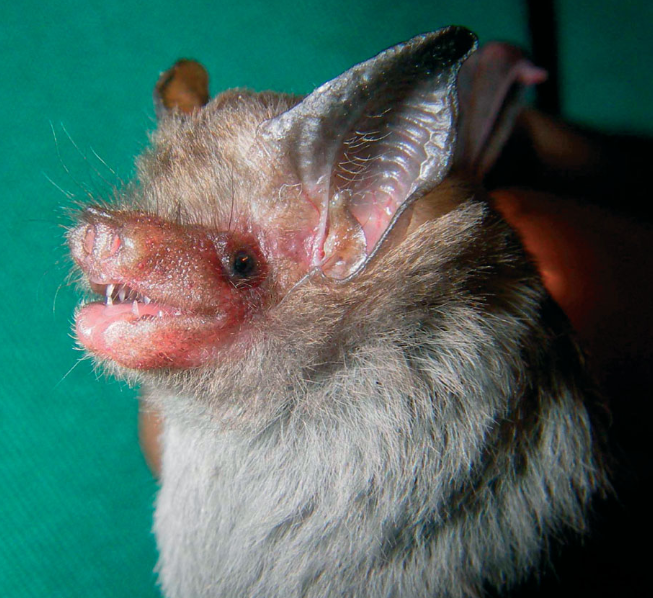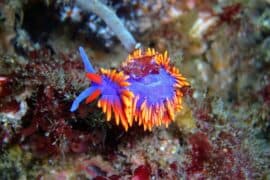Kitti's hog-nosed bat
(Craseonycteris thonglongyai)

Description
Kitti's hog-nosed bat (Craseonycteris thonglongyai), also known as the bumblebee bat, is a near-threatened species of bat and the only extant member of the family Craseonycteridae. It occurs in western Thailand and southeast Myanmar, where it occupies limestone caves along rivers. Kitti's hog-nosed bat is the smallest species of bat and arguably the world's smallest mammal. It has a reddish-brown or grey coat, with a distinctive pig-like snout. Colonies range greatly in size, with an average of 100 individuals per cave. The bat feeds during short activity periods in the evening and dawn, foraging around nearby forest areas for insects. Females give birth annually to a single offspring. Although the bat's status in Myanmar is not well known, the Thai population is restricted to a single province and may be at risk of extinction. Its potential threats are primarily anthropogenic, and include habitat degradation and the disturbance of roosting sites. Kitti's hog-nosed bat is about 29 to 33 mm (1.1 to 1.3 in) in length and 2 g (0.071 oz) in mass, hence the common name of "bumblebee bat". It is the smallest species of bat and may be the world's smallest mammal, depending on how size is defined. The main competitors for the title are small shrews; in particular, the Etruscan shrew may be lighter at 1.2 to 2.7 g (0.042 to 0.095 oz) but is longer, measuring 36 to 53 mm (1.4 to 2.1 in) from its head to the base of the tail. The bat has a distinctive swollen, pig-like snout with thin, vertical nostrils. Its ears are relatively large, while its eyes are small and mostly concealed by fur. In the jaw, the premaxillae are not fused with surrounding bones, and the coronoid process is significantly reduced. Its teeth are typical of an insectivorous bat. The dental formula is 1:1:1:3 in the upper jaw and 2:1:2:3 in the lower jaw, with large upper incisors. The bat's upperparts are reddish-brown or grey, while the underside is generally paler. The wings are relatively large and darker in colour, with long tips that allow the bat to hover. The second digit of the wing is made of a single short phalanx. And the humerus has an increased number of locking tubercles on its head and beyond. There is a considerable fusion in the axial skeleton, concerning the thoracic (three posterior vertebrae), lumbar (two posterior) and sacral (all) sections. The bat has particularly slender legs, with rather thin fibula.
Taxonomic tree:







